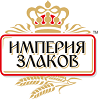 Information about companies exporting in Republic of Belarus: message board, products and services.
Information about companies exporting in Republic of Belarus: message board, products and services.
 His situated on the bank ofa picturesque river “Luchesa”. Quite near is a forest full of mushrooms, berries and adventures. There are unigue possibilities for fiching and bathing. It is just a paradise for those who like active rest. The forest, the river, the birds ‘twitter and' quiet peaceful talx about the peculiarities of “Belarusian national fisching” create good conditions for a nice rest. Fishermen and sportsmen will greatly enfou their rest!
His situated on the bank ofa picturesque river “Luchesa”. Quite near is a forest full of mushrooms, berries and adventures. There are unigue possibilities for fiching and bathing. It is just a paradise for those who like active rest. The forest, the river, the birds ‘twitter and' quiet peaceful talx about the peculiarities of “Belarusian national fisching” create good conditions for a nice rest. Fishermen and sportsmen will greatly enfou their rest! It is active rest that the owners of the farmstead “Y Petrovicha” offer:
Cost: one day 15-20-25 €
The Petrovich have a cose two storey wooden big house with six double rooms with all conveniences and a Russia bath-house inside; the spacious hall with a fire places a unigue cosines. In winter the house is heated with a stove. The kitchen is completely egnipped with the necessary untensils.
Vitebsk emerged on the picturesque steep banks of the Western Dvina and the Vitba, which were in the middle of the ancient trade way from Varangians to Greeks. The town appeared as the center of Slavs' Union of Krivichi. The favourable geographic position of the town on the crossroads of the most important trade ways contributed to its growth and prosperity for centuries.
Vitebsk was first referred to in Vitebsk Chronicle in 974. In 1021 Yaroslav Mudry (the Wise) granted Vitebsk and Usviaty to Polotsk Prince Briacheslav Iziaslavovich. After the death of his son Vseslav Charodei (the Magician) Polotsk land was divided into independent principalities, one of which was Vitebsk Principality ruled by the descendants of the Iziaslavovichs of Polotsk.
From 1192 Vitebsk was the capital of Vitebsk Independent
Principality.
In 1320 the town became a part of the Grand Duchy of Lithuania.
In 1136-1140 the town was enclosed with a massive defensive rampart; stone Churches of St. Mikhail, of St. Paraskeva Piatnitsa and of the Annunciation were built. By the middle of the 1 5th century Vitebsk had become one of the biggest towns in the Grand Duchy of Lithuania. Massive fortification walls together with the surrounding rivers and brooks were a reliable cover against enemy's attacks. In 1506 Vitebsk became the center of the province. The emblem of the principality "The Chase", a rider with a shield and a sword raised over the head on the red background, was officially approved. In 1597 Vitebsk got the Magdeburg Right for self-government. The town got an emblem and a seal.
In 1602 the first town hall was built. Since 1772 Vitebsk was a part of the Russian state. In 1796 Vitebsk became the center of Belarusian Province and in 1802 the center of Vitebsk Province.
In 1808 a men's gymnasia, one of the first in Belarus, was founded.
In 2004 a new emblem was approved. The emblem is a sideview image of the Saviour on the blue background of a Spanish shield, a dark red naked sword placed under it. The images of the Saviour and the sword have been present on the emblem since 1597. The figures of angels are shield holders.
Battles against Napoleon's troops were fought not far from Vitebsk during the Patriotic War of 1812. But the hardest ordeals fell to the town's lot during the Great Patriotic War of 1941 -1945. Furious fighting went on the distant and close approaches to the town. On July 11, 1941, fascist troops seized Vitebsk. As a result of the fighting actions the town was almost completely destroyed. The occupants organized 5 death camps in Vitebsk. All the Jewish population was locked in a ghetto and killed in the first months of the war (over 20 thousand people). Liberated from fascist invaders on June 26, 1944, the town lay in ruins, only 118 people survived in the basements of the buildings. During the time of the occupation fascists killed and tormented in concentration camps about 200 thousand prisoners-of- war and peaceful citizens in the town and the neighbourhood. The whole town blocks, industrial enterprises and architectural specimens were destroyed and wiped off the face of the earth. Thanks to the heroic efforts of the Belarusian people the town was restored from ashes.
Vitebsk residents piously revere the memory of the fallen in the fights with occupants. In the town there are the following monuments:
The Monument to the Heroes of the Patriotic War of 1812;
The Memorial Complex in Honour of Soviet Soldiers-Liberators, Partisans and Members of Underground Organizations;
The monuments on the site of the death camp "The 5th Regiment";
The monument on the site of the execution of the members of underground organizations; The memoriale marks on the site of the Jewish ghetto and the places of mass extermination of peaceful citizens. The heroes'names are immortalized in street names and memorial plaques.
GEOGRAPHICAL LOCATION
Vitebsk is an administrative, industrial and cultural! center of Vitebsk region and Vitebsk district and one off the most ancient towns in the Republic of Belarus. The climate here is mildly continental and characterized j by mild warm summer and mild cold winter. In the east j Vitebsk district borders on Liozno district and Smolensk j region of the Russian Federation, in the northeast on Pskov region of the Russian Federation, in the north on I Gorodok district, in the southwest on Shumilino and Beshenkovichi districts and in the south on Senno| district.
Vitebsk has a favourable geographic location as it is I situated on the ways from Russia to the Baltic countries, j from the Baltic countries to the southern districts of j Russia, Ukraine, the Caucasus and the countries of| Central and Western Europe.
375 29 7102321 МТС ; +375 29 3339909 Velcom
E-mail: info@ypetrovicha.com
http://www.ypetrovicha.com
Back to "All press releases" |
 Print version
Print version
10.04.2024JSC "Raton" is a diversified enterprise
Today "Raton" is a diversified enterprise equipped with modern equipment, which allows to ensure high quality products with minimal production time
08.04.2024JSC "Electromodul" is a specialized enterprise of automotive and power electronics.
Elektromodul OJSC, which is part of the INTEGRAL holding, has more than 40 years of experience in the development and production of power diodes, semiconductor blocks, and voltage regulators.
05.04.2024GOMEL FOUNDRY "Centrolite" is the largest enterprise in Belarus, specializing in the production of cast products from gray and ductile iron
GOMEL FOUNDRY "Centrolite" is the largest enterprise in Belarus, specializing in the production of cast products from gray and ductile iron
04.04.2024Compound feed in granular form is produced for all types of farm animals, poultry and fish.
We offer complete lines for the production of granulated animal feed
13.03.2024FME "Miloshevichsky Forestry" is implementing the following types of products and services:
FME "Miloshevichsky Forestry" is implementing the following types of products and services:



